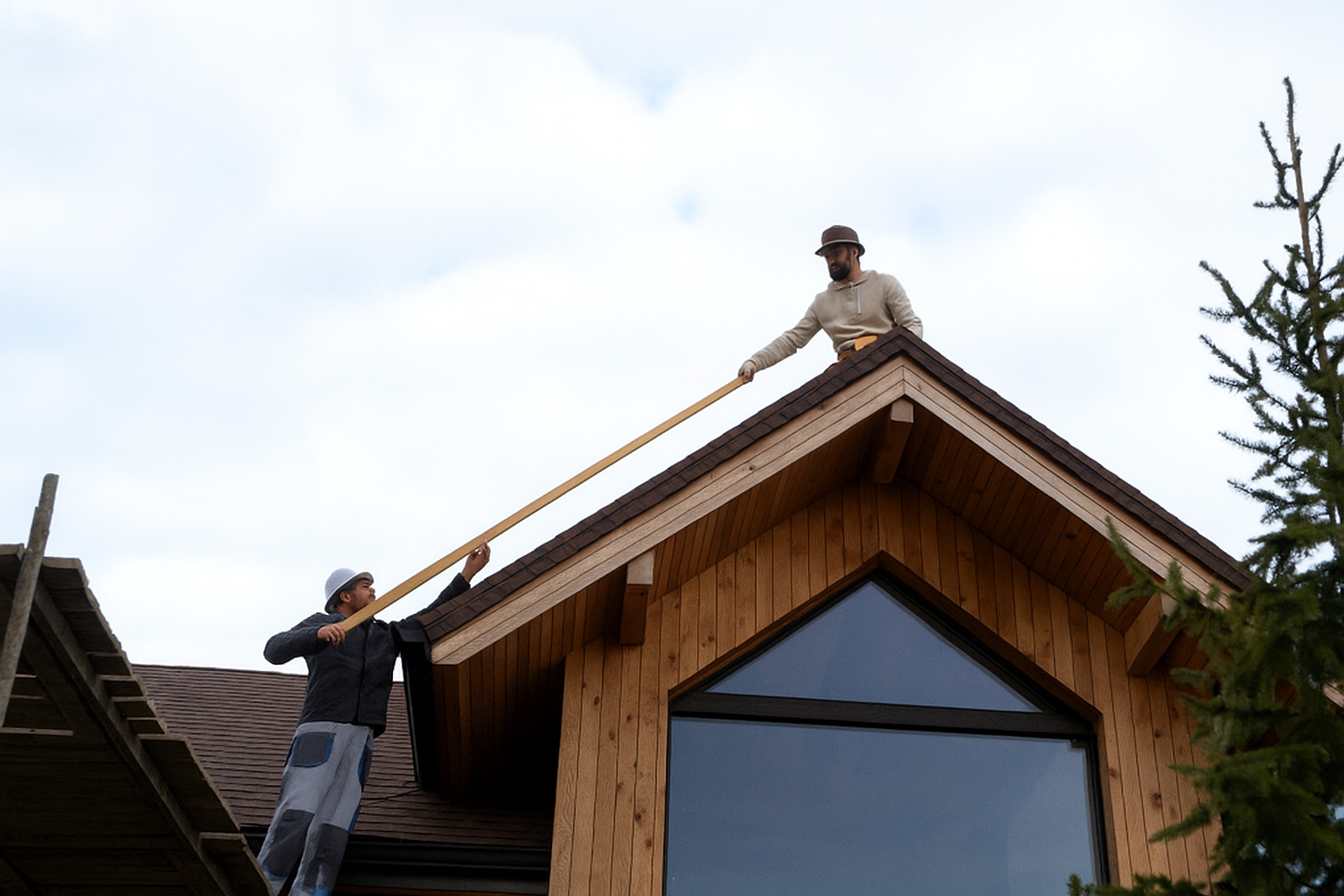Your roof quietly protects your home from rain, sun, wind, and snow but it won’t last forever. Understanding how often you should change your roof is key to preventing costly damage and maintaining your home’s value. In this guide, we’ll break down typical roof lifespans, signs of wear, and when a full replacement is the smarter choice.
What Impacts the Lifespan of Your Roof?
Every roof has an expiration date, but several factors influence how soon that day comes.
1. Roofing Material Matters: Different materials come with different life expectancies:
- Asphalt shingles: Standard warranties often cover up to 50 years.
- Wood shakes: Most manufacturers do not provide warranties, and their lifespan depends heavily on maintenance.
- Metal roofs: Typically last 50 years depending on type and finish.
- Flat roofing systems: Lifespan varies by material – TPO membranes usually last around 25+ years, while EPDM membranes can last 50 years.
Not sure about your flat or low-slope roof? Our flat roof replacement guide goes deeper into timelines and materials.
2. Installation Quality: A roof that’s been professionally installed will likely last longer. Mistakes during installation often lead to early leaks, poor drainage, or premature aging.
3. Local Climate Conditions: Heavy snow, intense heat, high winds, or hurricanes can all reduce your roof’s expected lifespan. Even UV exposure can degrade materials over time.
4. Roof Ventilation and Upkeep: Poor ventilation causes moisture buildup, leading to mold or rot. Regular inspections and gutter cleaning go a long way toward extending your roof’s life.
Lifespan by Roof Type: How Long Should Yours Last?
1. Asphalt Shingle Roofs: These are the most common for residential homes and often carry 50-year standard warranties, though performance varies by climate and maintenance.
Read More: How Long Does A Shingle Roof Last
2. Wood Shake Roofs: With proper care, wood shakes may last up to 40 years, but they’re more susceptible to moisture and insect damage, and most manufacturers don’t offer warranties.
3. Metal Roofs: Durable and energy-efficient, metal roofs last up to 50 years depending on the type of metal and finish.
Read More: How Long Do Metal Roofs Last
4. Flat or Low-Slope Roofs: Membrane systems vary – TPO typically lasts around 25+ years, while EPDM can last 40–50 years.
Learn More: How Long Do Roofs Last?
Telltale Signs Your Roof Needs Replacing
How do you know it’s time to stop patching and start planning for a new roof? Watch for these red flags:
1. Curled, Cracked, or Missing Shingles: Visible damage on multiple areas of the roof is a key indicator of aging or weather stress.
2. Recurring Leaks: If your ceiling is developing stains or your attic shows signs of water intrusion, the underlayment may be failing.
3. Sagging Roofline: A sagging roof often means structural damage or rot, both serious issues that call for immediate action.
4. Your Roof Has Outlived Its Expected Life: Even if it looks fine from the ground, a 25-year-old asphalt roof has likely reached the end of its useful life.
When’s the Best Time of Year to Replace Your Roof?
Seasonal timing matters more than many homeowners realize.
- Spring and fall are generally ideal for roof work. The mild temperatures allow materials to seal properly.
- Summer replacements are possible, but heat can cause complications for certain materials.
- Winter often brings delays and installation challenges.
If you’re on a timeline, it’s smart to book early. Good roofing contractors fill up fast especially in peak seasons.
How Long Does Roof Replacement Take?
Most residential roofing projects are completed in just one day (95% of homes), depending on:
- Size and pitch of your roof
- Material type
- Weather conditions
- Complexity of the job
Learn More: How Long Does It Take to Replace a Roof
Should You Repair or Replace?
It’s a common question. Here’s how to decide:
Choose repair if:
- Damage is localized.
- The roof is under 10–15 years old.
- There’s no major moisture intrusion.
Choose replacement if:
- You’re seeing widespread wear.
- Repairs are becoming frequent.
- The roof is nearing its age limit.
- You’re preparing to sell and want to boost curb appeal.
Read More: Roof Repair vs. Replacement
Final Thoughts
Don’t wait for storm damage or interior leaks to think about your roof. Regular maintenance, timely inspections, and early action can save you thousands in future repairs.
If you’re not sure about your roof’s condition or it’s been over 20 years since installation, it might be time to consult a professional. Our experienced team can walk you through your options and provide a no-obligation inspection. Learn more about our roofing services today.




















